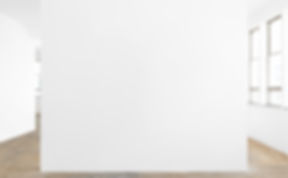
Chapter Two: Identity and Migration
A group exhibition at PSM, Berlin, curated by RESERVOIR
31 January 2025
-
14 February 2025

Chapter Two: Identity and Migration

Chapter Two: Identity and Migration

Chapter Two: Identity and Migration

Chapter Two: Identity and Migration
PSM Berlin presents a series of three exhibition Chapters, following the Fallow Ground exhibition. Curated by RESERVOIR from Cape Town, Fallow Ground showcased 22 Southern African artists at Spaced Out, Gut Kerkow, from October to December 2024. From January to March 2025, new works by these artists will feature in three exhibitions, each exploring distinct sub-themes: natural materiality, identity and migration, and contemporary archaeology.
Chapter Two: Identity and Migration
Following Chapter One: Vernacular Materiality, the second Chapter in this exhibition series turns its focus to questions of identity and belonging. In a world increasingly defined by movement—whether voluntary, forced, or circumstantial—the works in Identity and Migration reflect on how artists negotiate their place in shifting social and geographical landscapes. Drawing from personal and collective histories, the artists in this exhibition explore migration not just as a physical journey but as a conceptual and emotional experience that shapes self-perception and cultural continuity.
The exhibition presents works by four South African artists, Alexandra Karakashian, Mongezi Ncaphayi, Jody Paulsen, and Mankebe Seakgoe, and three Zimbabwean artists, Michele Mathison, Richard Mudariki and Brett Seiler. Each artist examines identity through a different lens—whether through material, symbolism, or narrative—considering the forces that shape and destabilise one’s sense of belonging. The dialogue between these works highlights themes of heritage, displacement, and reclamation, reflecting how identity is never fixed but constantly negotiated.
Works like Karakashian’s large-scale paintings specifically address exile, land, and environmental fragility. Her Armenian heritage and family history of forced migration inform a broader investigation into belonging, erasure, and the traces of history on contemporary existence. In conversation with the industrial materiality of her practice, a sculpture in stone, copper, and steel by Michele Mathison speaks to the mass movement of people across Southern African borders, reflecting the Zimbabwean artist’s own migratory experience. Born in South Africa and raised between Rome, Maputo, and Bulawayo, Mathison’s early life was unsettled and multilingual, shaped by large-scale political events such as Zimbabwean independence in 1980 and South Africa’s democratic transition from apartheid—experiences filtered through strong familial ties with notable anti-apartheid figures.
Jody Paulsen’s large-scale felt collage 4 Spoilt Boyz (2020), presents a fragmented narrative of boyhood and social identity growing up in Cape Town, merging pop culture and personal memory with larger histories of religious and cultural rituals. Iconic signifiers like the Jumpman logo, synonymous with athletic prowess and aspirational masculinity, is ruptured by the phrase “Dead or Alive,” speaking to the fraught nature of youth and aspiration within specific socio-political contexts. Similarly, A Thing of Beauty (2020) revisits the Luxurama, a once-iconic mixed-race cinema in Cape Town that served as both a site of cultural gathering and political awakening. Through these works, Paulsen reclaims spaces of nostalgia, transforming them into sites of critical reflection.
Mankebe Seakgoe’s practice similarly navigates the intersections of language and selfhood, reflecting on how linguistic frameworks shape one’s ability to belong or be understood. Born in Pietersburg, Limpopo, her experience of resettling in Johannesburg heightened her awareness of the role of language in shaping thought. Faced with a new language barrier and consequently struggling with verbal communication, she turned to silence, observation, and alternative modes of expression. Drawing from black thought and literature, she explores linguistic determinism through poetry and storytelling. Her text-based drawings in Identity and Migration examines how language both enables and restricts identity formation, particularly in contexts of movement and cultural transition.
Mongezi Ncaphayi’s abstract works, often created through intricate mark-making and fluid washes of ink, are deeply inspired by jazz, improvisation, and movement. His early compositions reflect on historical migration patterns, particularly the experiences of Black South Africans seeking work in mines and cities. His 2024 work, Bo-Kaap Nocturne, references the Cape Town neighborhood where he currently lives—a historically significant area formerly known as the Malay Quarter, a home to a large population of enslaved laborers from Malaysia, Indonesia, and other parts of Africa dating back to the 1700s. Now a heritage site, Bo-Kaap remains a culturally rich and deeply symbolic space. The call to prayer at sunset from its ten mosques may be the nocturne (“of the night”) that Ncaphayi evokes in the title.
In Richard Mudariki’s work, we encounter the phrase Kufa nenyota makumbo ari mumvura (to die of thirst while your feet are in water) – a Shona proverb that speaks to suffering in the midst of abundance. Given Zimbabwe’s history—economic crises, hyperinflation, food and water shortages, and political instability—the work is most certainly a critique of the country’s governance and systemic failures. Despite Zimbabwe’s wealth in natural resources, many citizens experience extreme hardship, making the proverb’s message especially poignant. It could also be read as a commentary on migration, where individuals leave their homeland in search of opportunities despite Zimbabwe’s untapped potential.
Finally, Brett Seiler’s text-based and painted works interrogate queer identity and longing, often referencing notions of exile—both literal and metaphorical. His use of nostalgic imagery, tinged with desire and loss, reflects on how identity is shaped by memory, repression, and the act of self-assertion.
Chapter Two: Identity and Migration considers movement as both a physical reality and a conceptual framework, shaping the ways we understand selfhood. Through diverse artistic practices—ranging from abstraction and material experimentation to text-based works and figurative painting—the exhibition explores migration as a lived experience that is continuously reshaped. In doing so, the exhibition not only foregrounds Southern African perspectives but also situates them within global conversations on diaspora, hybridity, and the ever-shifting nature of home







